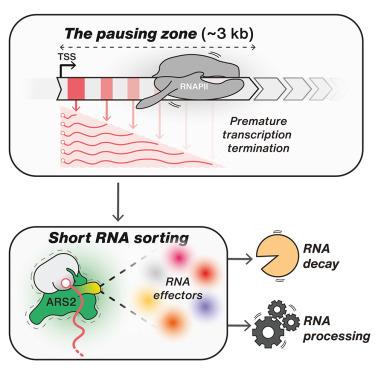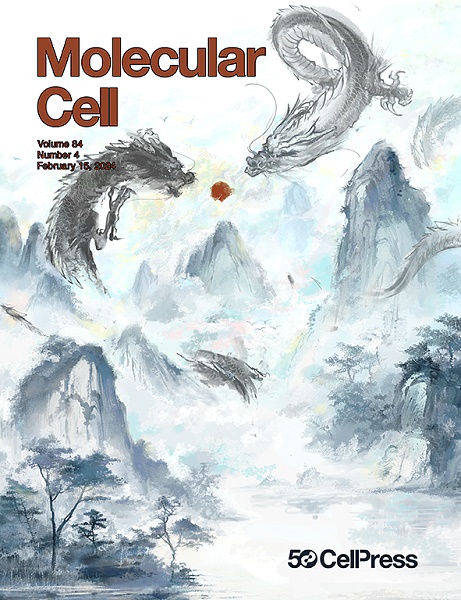短 RNA 聚合酶 II 转录本的核分选
IF 14.5
1区 生物学
Q1 BIOCHEMISTRY & MOLECULAR BIOLOGY
引用次数: 0
摘要
哺乳动物基因组产生大量短 RNA。这在很大程度上是由于 RNA 聚合酶 II(RNAPII)在全基因组范围内的虚假活性。不过,这也是因为绝大多数启动的 RNAPII,无论转录的 DNA 单元是什么,都会在∼3 kb 的早期 "暂停区 "内终止。鉴于由此产生的 RNA 既有功能性的,也有非功能性的,因此对它们进行适当的分类至关重要。对这种质量控制(QC)的一种看法是,转录本从一开始出现就被衰变因子无情地锁定,只有通过保护性处理途径才能避免衰变。在这一概念的分子具体化过程中,最新研究进展发现,"破坏性 "和 "生产性 "RNA效应因子都会在封端RNA的5′末端聚集,并由重要的亚砷酸盐抗性蛋白2(ARS2)蛋白协调。基于这一原理,我们在此讨论早期 QC 机制,以及这些机制如何将短 RNA 分类到它们的最终命运。本文章由计算机程序翻译,如有差异,请以英文原文为准。

Nuclear sorting of short RNA polymerase II transcripts
Mammalian genomes produce an abundance of short RNA. This is, to a large extent, due to the genome-wide and spurious activity of RNA polymerase II (RNAPII). However, it is also because the vast majority of initiating RNAPII, regardless of the transcribed DNA unit, terminates within a ∼3-kb early “pausing zone.” Given that the resultant RNAs constitute both functional and non-functional species, their proper sorting is critical. One way to think about such quality control (QC) is that transcripts, from their first emergence, are relentlessly targeted by decay factors, which may only be avoided by engaging protective processing pathways. In a molecular materialization of this concept, recent progress has found that both “destructive” and “productive” RNA effectors assemble at the 5′ end of capped RNA, orchestrated by the essential arsenite resistance protein 2 (ARS2) protein. Based on this principle, we here discuss early QC mechanisms and how these might sort short RNAs to their final fates.
求助全文
通过发布文献求助,成功后即可免费获取论文全文。
去求助
来源期刊

Molecular Cell
生物-生化与分子生物学
CiteScore
26.00
自引率
3.80%
发文量
389
审稿时长
1 months
期刊介绍:
Molecular Cell is a companion to Cell, the leading journal of biology and the highest-impact journal in the world. Launched in December 1997 and published monthly. Molecular Cell is dedicated to publishing cutting-edge research in molecular biology, focusing on fundamental cellular processes. The journal encompasses a wide range of topics, including DNA replication, recombination, and repair; Chromatin biology and genome organization; Transcription; RNA processing and decay; Non-coding RNA function; Translation; Protein folding, modification, and quality control; Signal transduction pathways; Cell cycle and checkpoints; Cell death; Autophagy; Metabolism.
 求助内容:
求助内容: 应助结果提醒方式:
应助结果提醒方式:


